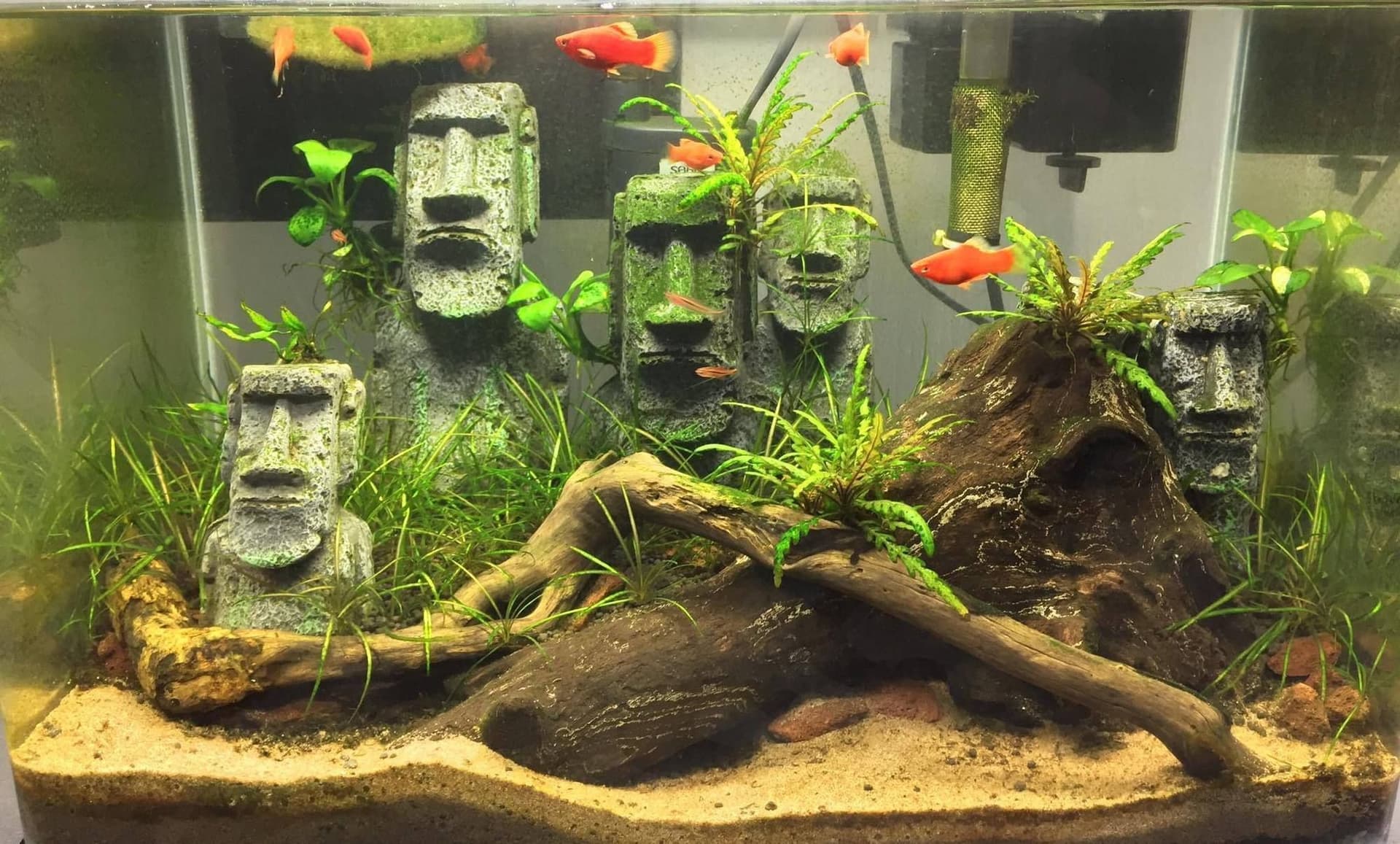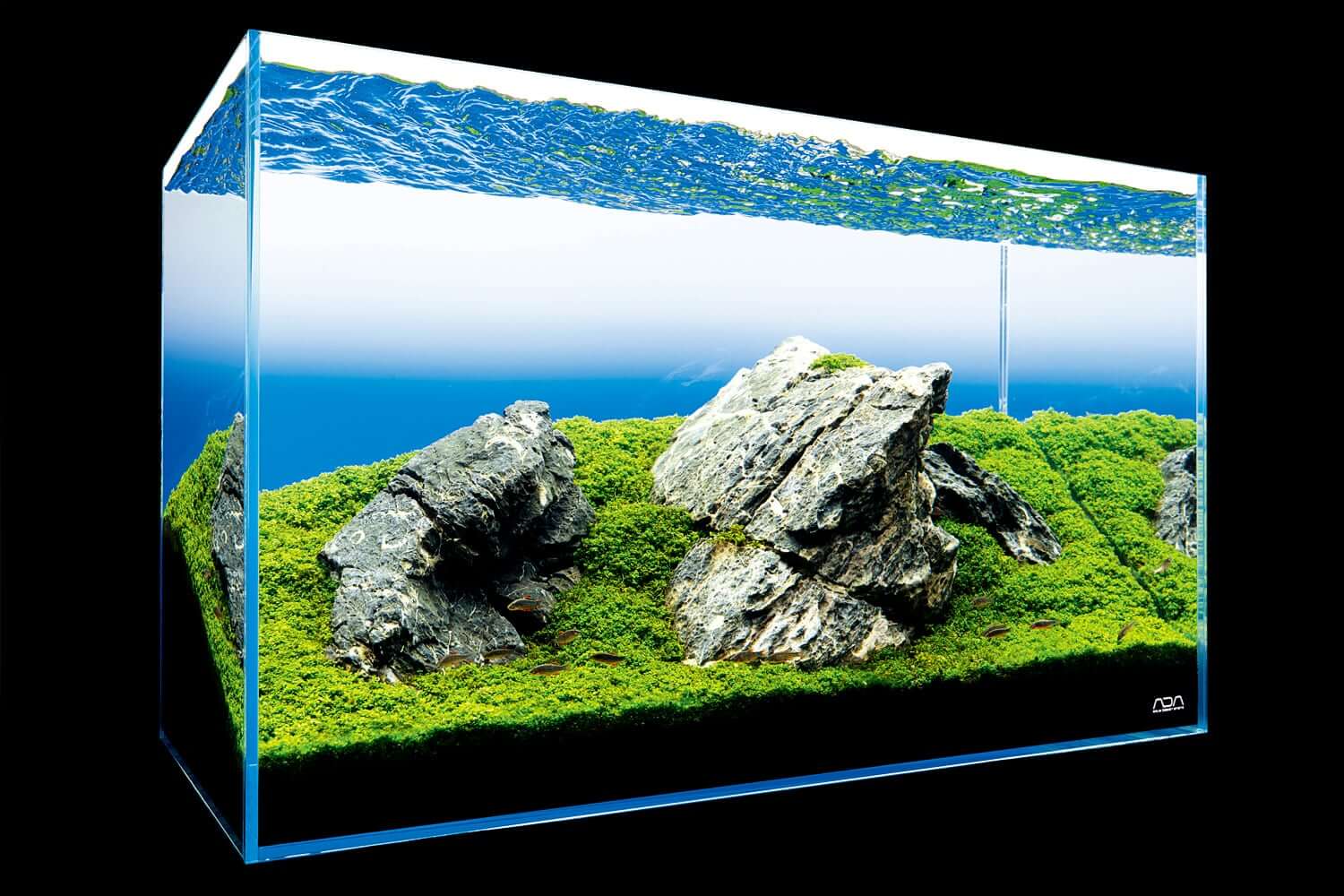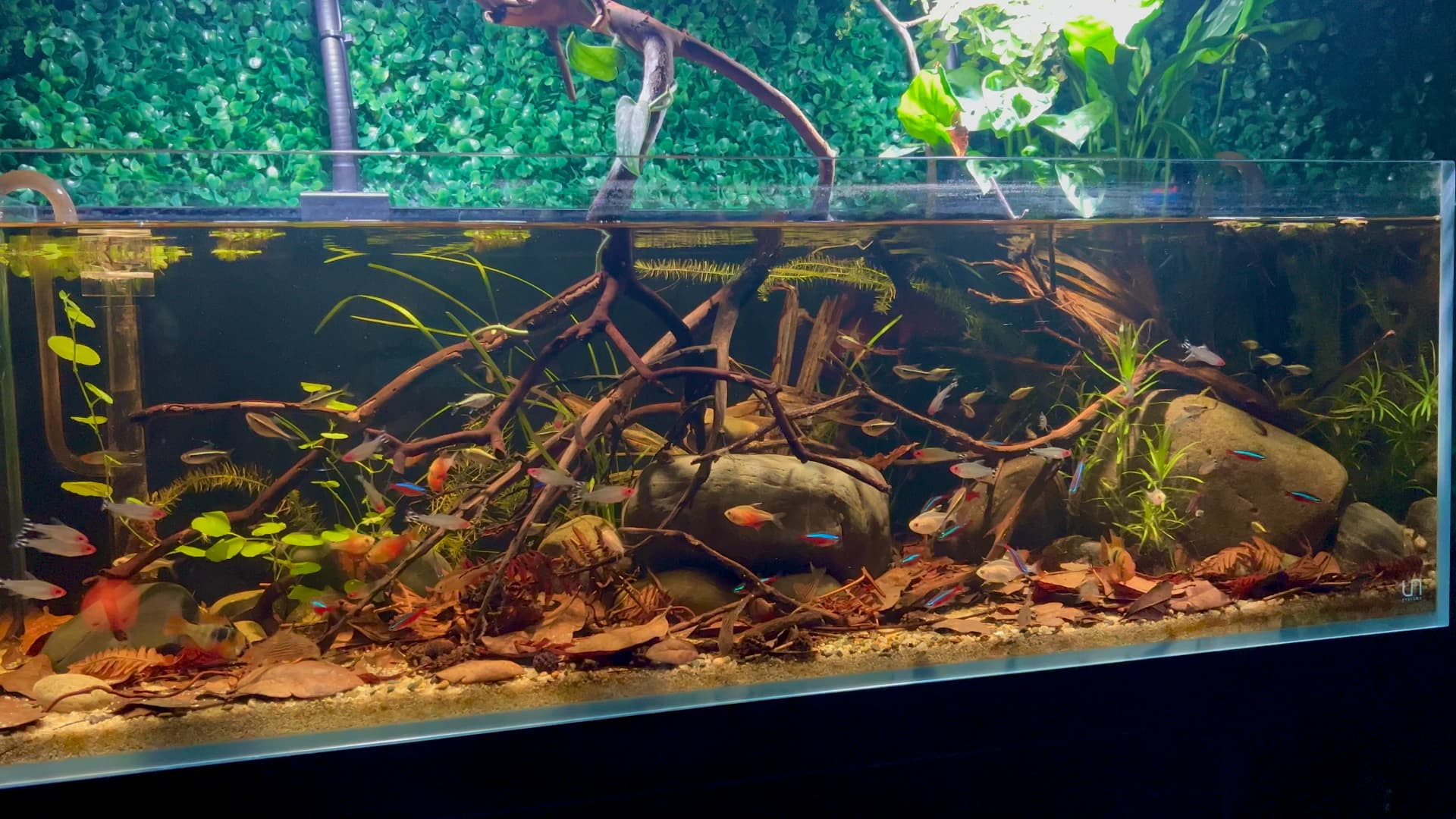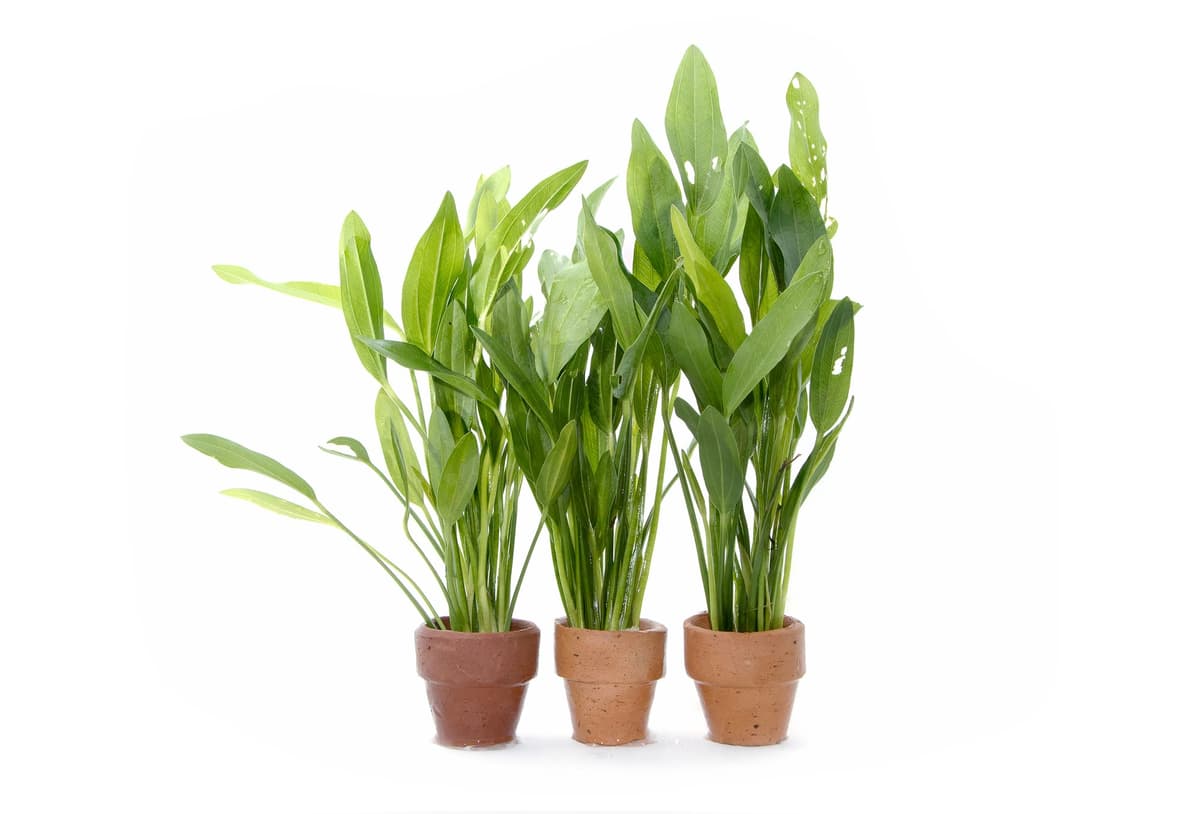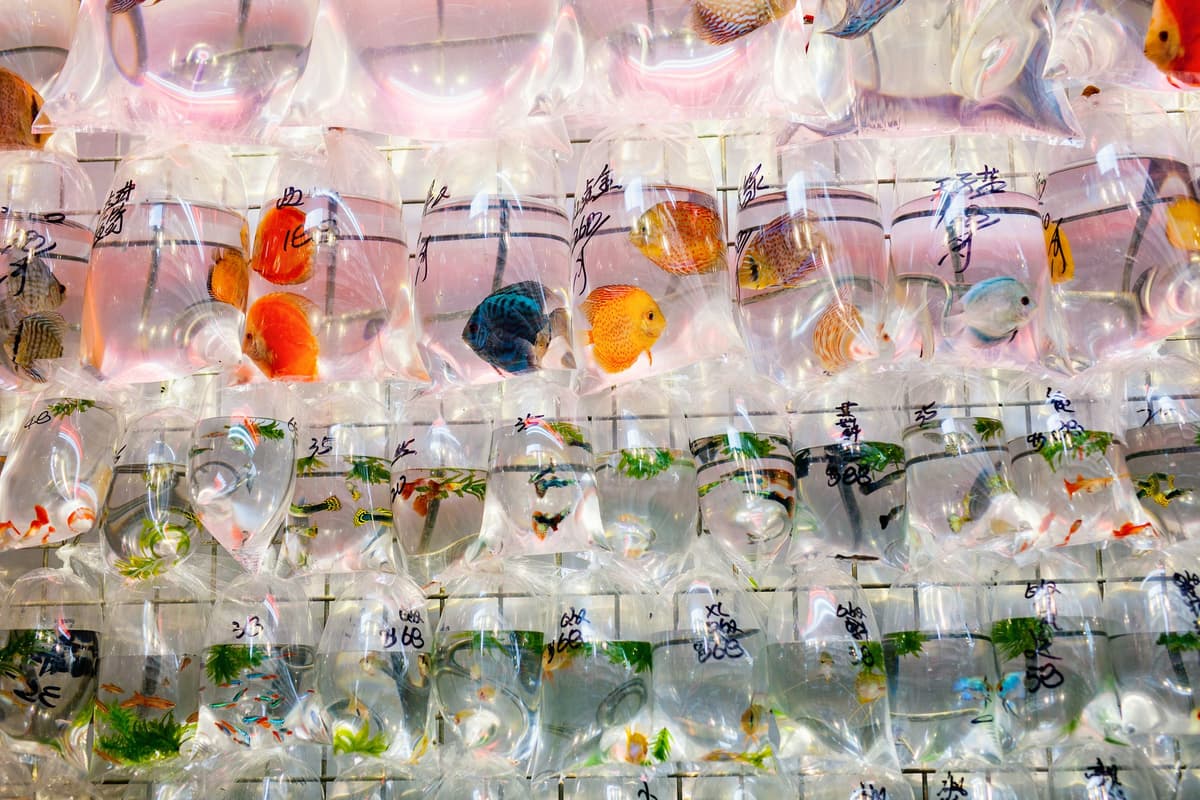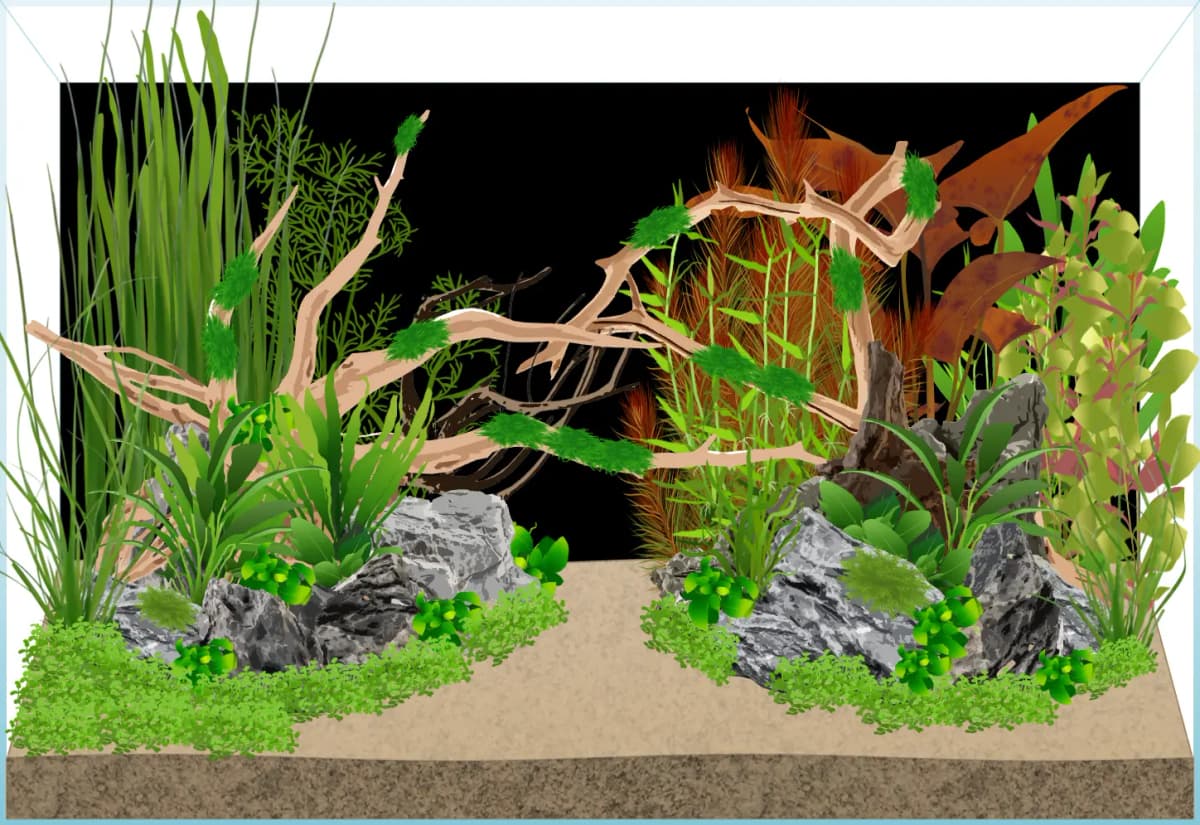So you’ve finally decided to set up your first aquarium. All the equipment has arrived at your house; the tank, the filter, the heater, the stand etc. But now the fun part - or daunting part if you’re me - setting up the aquarium to look like a real underwater landscape.
If you’re artistic then this could be enjoyable but in order to make an aquarium look cohesive and natural you have to create a plan and stick to it.
If you’ve never heard of the word aquascaping before, don’t worry, most people haven’t. This is what Webster's Dictionary says:
an arrangement of elements (such as plants and rocks) in an aquarium intended to create the appearance of a natural aquatic environment
Sounds simple right? It’s very easy to chuck any old thing in. Put a few plants on the left and a rock on the right and call it a job done.
Fair enough the fish might not care (well sometimes they do), but an aquarium is a focal point of a room. You want to draw attention to it in a good way.
What are the different aquascape styles
This is not a definitive list of aquarium types and styles. I'm sure there's thousands of niche ones or subcategories of the following. But this should at least inspire you enough to see what style takes your fancy.
Planted Aquariums
A planted aquarium is your go to first option. It’s simply a mix of aquatic plants with wood and rock. There are no particular rules here. You style your aquarium first with the hardscape (the wood and stones). Then you either attach plants to the hardscape or plant them in the substrate.
Very often these sort of aquariums will have an open front with some kind of white sand where the fish will swim. Often aquascapers try to display a sense of depth to make the aquarium feel bigger than it is.
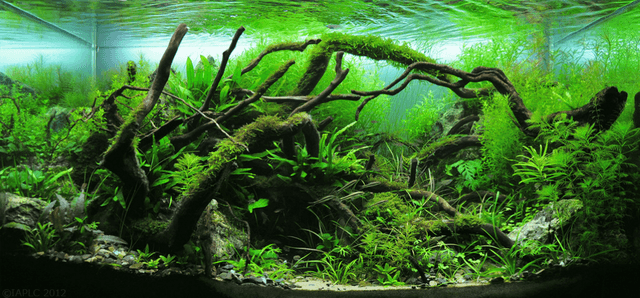
Hardscape Aquariums
These aquariums are designed purely with rocks and wood. While that may sound like the easiest aquarium setup, these are actually very tricky to get right.
Firstly since the plan is so simple you have to take great care in making it look interesting (and not just some rocks dumped in a tank). Planted aquariums are a bit more forgiving due to the appeal of nature.
Secondly, since there are no plants in the water, you will have a harder time ensuring your water parameters are up to scratch. This will require more attention and care.
 Photo by Aquarium Design Group
Photo by Aquarium Design Group
Dutch Aquariums
A dutch aquarium technically belongs under the planted aquarium ‘genre’. To many aquarists this style of aquarium is the origin of aquascaping. Dating back to the 1930’s aquascapers tended to lean away from the naturalistic style which is so common these days. The defining difference is the lack of hardscape and ‘overplanting’.
The goal when designing a tank in this form is to create an underwater garden. They are filled to the brim with colorful plants in the form of bushes. The focus is on how these plants are arranged.
A dutch aquarium is not an easy task, and absolutely not something a beginner should look to tackle. Fish often come in second to the plants in these designs, and maintaining that many different types of plants is no small feat.
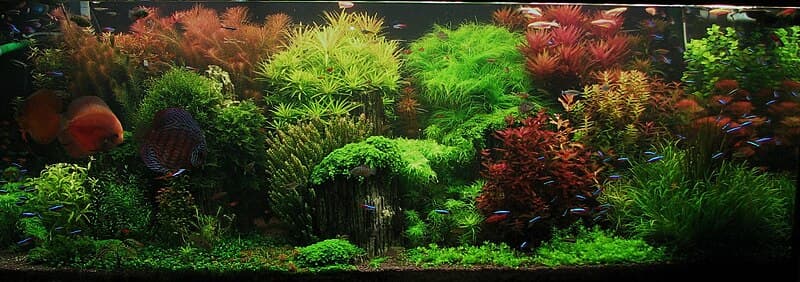
Iwagumi Aquariums
The Iwagumi style aquarium is one of my personal favorites and arguably the most famous of aquarium designs. Developed by the late Takashi Amano (often referred to as the godfather of aquascaping) about 30 years ago, the designs represent simplicity and tranquility. This could be said to reflect Japanese culture.
It is a planted aquarium, but with only small carpeting plants (plants that cover the bottom surface of an aquarium but don’t grow tall) and a ‘simplistic’ rock formation in the center which is the core focus.
While these may look easy to set up, don’t be fooled! Finding the correct position for the rocks and placing them in a fluent yet natural way is extremely difficult.
The best way to understand these aquariums is to picture a serene Japanese garden.

Biotope Aquariums
Biotope aquariums copy somewhere real in the world, and try to replicate it within the fish tank. They use nature to not only inspire but directly take as the setup for their aquarium. The best part about aquariums like this are their endless possibilities. Often hobbyists try to replicate their local habitats, to better understand the fauna but to show the rest of the world.
A true biotope uses fish, plants, rocks and wood only from a single place. Sometimes this may be a specific river or section of coast. Or even an entire country. This is up to the creator, but the goal remains the same. To replicate something in nature accurately within the aquarium.
You can think of it as taking a literal section of a river and putting it into an aquarium, with the same predators and prey. Sometimes the rawness of these aquariums makes them even more appealing than a finely manicured underwater garden.
Decorated Aquariums
Now this one may be a bit contentious to include on a list like this but every aquarium has their merits. It is also probably the most common style of aquarium you will find in the world.
A decorated aquarium can arguably be created in any way you see fit. But the most common setup would be a themed set of plastic decorations with a few rocks and plants dotted around the fish tank.
While these may not have the same impressive look, they work extremely well for someone getting into the hobby. Plants and real wood and rocks can often cost an arm and a leg. These aquariums have low maintenance, low cost and are very easy to set up. Your kids will also love it!
The best thing to do is stick to a theme (Spongebob or pirates etc.) and plant loosely around this, with the decoration in the foreground.
Picking the right aquascape for you
So, now you know the 6 main aquarium styles. All of them have their merits.
But how do you choose which aquascape style is right for you?
Things to consider
- How much time you have for maintenance
- The cost of the decorations
- Whether it will fit in with the aesthetic of your room
Lastly, but most importantly, if you already have a specific type of fish in mind - choose an aquascape style that suits your fish! Research whether your fish likes to hide in plants or needs lots of swimming space. Or if they’ll eat the plants…
Choosing where to buy aquarium plants
When deciding where to buy plants, you have the option of visiting a LFS (local fish store) to personally inspect the quality, or exploring the wider selection available online for more variety.
If you have a LFS at your disposal then it's always best to go there. The first hand knowledge you can gain from the staff is invaluable.
Selecting the right plants
For plant selection, you can either go for the convenience of tissue culture, grown plants or potted plants.
- Tissue culture
these are effectively lab grown aquarium plants. You'll get a lot of bang for your buck here, as growers often cram them in and you aren't likely to find any pests. They also come in tubs that will last longer outside of the aquarium. Giving you more time to prepare.
- Potted plants
This is the classic aquarium plant. Often grown with the leaves above water and then submerged when you plant it. Plants grown in this way are often a bit more hardy and receptive to the change in conditions for your aquarium.
Before purchasing plants, it's essential to check their maximum height potential to avoid overcrowding and ensure they align with the desired aesthetic of your tank.
If you're new to aquascaping, starting with easy-to-grow plants can help simplify the maintenance process and build your confidence in caring for your aquarium.
If you're unsure of what plants to go for, check out our recommended 7 best beginner plants
A forewarning: It's common for newly introduced plants to experience some initial leaf loss as they acclimate to their new surroundings, but don't fret – they typically bounce back stronger.
Setting up the hardscape and equipment
-
Before adding wood to your tank, ensure to soak it in water for a period of time; this helps prevent the release of tannins, which could potentially discolor your tank water.
-
In the case of biotope tanks, where authenticity is key, consider boiling any leaves and seeds you intend to add to your aquarium setup to prevent them from excessively darkening the water.
-
When cleaning decorations for your tank, opt for warm water without any soap; this ensures a thorough clean without introducing any harmful chemicals into your aquarium.
-
For more demanding plant species, consider setting up CO2 injection for your setup to provide the necessary nutrients for optimal growth and health.
Choosing the right equipment for your aquascape
The main difference in equipment for these different aquascapes will be
- Lights
- C02 system
The aquarium shape and size will be mostly up to you depending on what fish you choose.
Remember - it may feel counterintuitive but it’s always easier to go bigger.
If you are going for a heavily planted tank then make sure you have C02. You must also ensure you provide sufficient light to your chosen plants.
Setting up CO2 is no small feat. If you're wondering how to go about it then check out our blog - How to set up CO2 for your aquarium
So long story short, this will be mostly up to you to work out, based on your plant and fish selection.
Design methodologies you should follow while decorating your aquarium
A few tips for when you start the actual aquascape. Please don’t follow these religiously, as it will take away the fun of aquascaping but they are worth keeping in mind, and will help you reach a better looking design!
1. Specific plants are better suited for either the foreground, midground or background.
- Carpeting plants should be placed at the front.
- Colorful mid-sized plants with nice leaves can be placed in the midground
- Your tallest plants should go at the back.
This may seem obvious but is really worth paying attention to. This way you will get a fully fleshed out looking planted aquarium.
2. Utilize perspective to create a sense of depth
This often means using smaller rocks in the foreground and larger ones in the background to create the illusion of distance and depth.
Planting in the order mentioned above will also help with this.
3. Plant in a naturalistic way
This means grouping similar plants together in bunches (we cover this in our blog on 10 tips for your planted aquarium) and using a varying degree of heights and textures to show the chaos of nature.
4. Incorporate focus points
When someone looks at your aquarium their eyes should be drawn to a specific area.
This often takes the form of a central decoration or rock. If you have a long aquarium the focus points should draw the eyes from one side to the other.
Takashi Amano says you should only have one, but many aquascapers have two. Go with your own preference and taste here.
 In this image you can see the aquarium has 2 stone pillars on each side drawing the focus down the middle of the aquarium.
In this image you can see the aquarium has 2 stone pillars on each side drawing the focus down the middle of the aquarium.
Before you start overthinking and flooding your brain with ideas, the goal is to design whatever you like.
The best way to do this is to place your decorations in the aquarium without any of the water or plants. This way you can experiment with positions, shapes and different decorations.
Once you are happy with your hardscape, take a picture of it. Your aquarium will be much harder to alter once it’s planted, and filled with water and fish.
I know it’s easy to rush this bit but take your time, it may even be worth leaving your plant order till after you have set up the hardscape and are happy with it.
What Tools Can I Use to Help Design My Aquarium?
3D Design Tools (CAD, SketchUp, etc.)
- Require some expertise, but offer great flexibility and creative freedom.
- Useful for custom aquarium layouts and designs.
- The original dedicated online aquascaping design tool.
- Hundreds of plants, rocks, and decorations to choose from.
- User-friendly and ideal for visually designing aquarium layouts.
- The ultimate aquarium design and planning platform.
- Access one of the largest selections of aquatic plants, hardscape materials, and essential products all in one place.
- Effortlessly use the visual editor to experiment with different layouts and designs, helping you perfect your aquascape before you begin.
- Designed for both beginners and experienced aquarists—plan your setup, avoid costly mistakes, and create a stunning aquarium you’ll love.
Ready to give aquascaping a try?
Aquascaping is not just about creating a visually appealing underwater landscape; it's a form of artistic expression and creativity that offers numerous benefits beyond aesthetics.
By carefully designing your aquarium, you can provide enrichment for your fish, offering them a more natural and stimulating environment. Additionally, a well-designed aquascape can create a calming atmosphere, both for the inhabitants of the tank and for those who admire it.
So, as you start your aquascaping journey, remember to enjoy the process, explore different styles, and let your creativity flourish.
